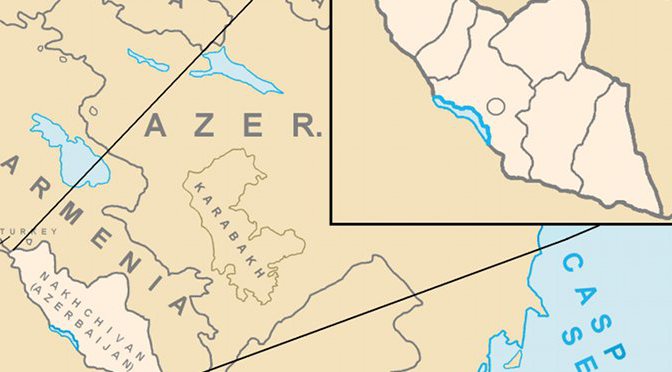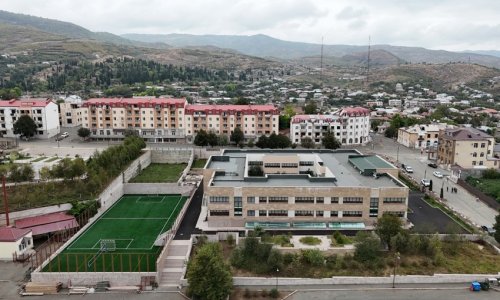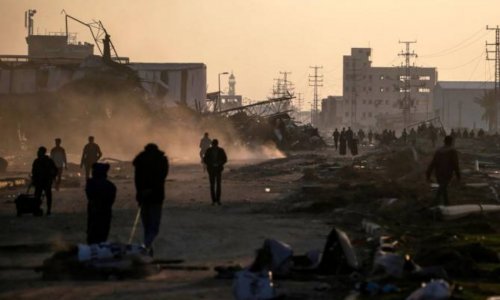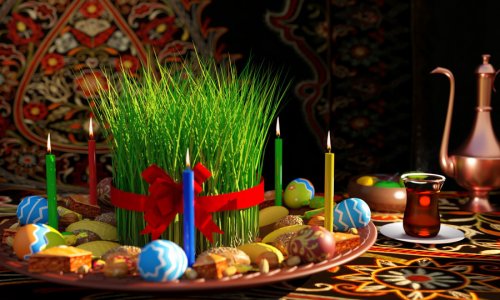By Basrad Pashayev
Nakhchivan Autonomous Republic is an exclave of the Azerbaijan Republic. This wonderfully atmospheric region borders Turkey to the northwest, Armenia to the north and east, and Iran to the south. The isolation of Nakhchivan Autonomous Republic from the rest of the country is dating only from 1924, when Stalin transferred the province of Zangazur to Armenian control. In result of the Daglig/Nagorno Garabagh/Karabagh (the Azeri province occupied by Armenia) conflict between Armenia and Azerbaijan, the Armenian forces bombed Nakhchivan, but never were able to invade, taking only the village of Karki. The capital of the Autonomous Republic is Nakhchivan city and the enclave has an area of 5,500 sq. km with a population around 500.000. Nearly 75% of the territory is located at a height of 1,000m and above – Nakhchivan is known for its majestic mountains.
The city of Nakhchivan was mentioned firstly in Ptolemaios’s "Geography” as Naksuana and said to be established in 4400 A.D. Being involved in empires, sultanate, and khanate the name of Nakhchivan was altered many times. Some of these names are: Nakshi jahan ("The Beauty of the World”), Nuh chikhan (the place where Prophet Noah landed), and etc. The word Nakhchivan was differently presented in early sources: Naksuana in Greek, Nakhch in Pehlevi, Nakhchuan in Arabic. Despite of so many ideas were put forward by different researchers about the name of Nakhchivan the name of area is closely associated with Prophet Noah and Legend of World Flooding. The existence of the legend of Noah in holy Koran and Bible the epics Gilgamush and Gamigaya rock writings at the nearby of worship places which is located on the highest peak of the Lesser Caucasus mountains, Gapijig peak, 3907 meter from the sea level (located in the area of Ordubad of Nakhchivan) is quiet relevant to reality. Prophet Noah’s grave is also found in Nakhchivan city and a Complex is restored to this honor.
The Nakhchivan city is located on the crossroads of ancient trade routes. In The Early Middle Ages, the links between Nakhchivan and the countries of Asia Minor, Middle East and Transcaucasia became especially close. The city’s wealth and geopolitical position became the reason for frequent raids from neighboring countries. In the middle of the 1st century AD the city was sacked and destroyed by the Byzantine Emperor Iraclion the 2nd; it was frequently sacked during the Mongol raids; it became a permanent conflict of interest between Byzantine and Arab Caliphate. In all times Nakhchivan was one of the key cities of different states – the ruling dynasties of Sadjids, Salarids, the capital of the Azerbaijan State of Atabey Eldegiz. It eventually became an independent Khanate in the 18th century and was integrated to Russia in the 19th century. In 1991, as the USSR started to collapse, Nakhchivan declared independence for Azerbaijan, second only to Lithuania. Today as an Autonomous Republic within Azerbaijan, Nakhchivan has its own parliament (supreme assembly) and Cabinet of Ministers and Chairman of Supreme Assembly is the highest position.
The city also enjoyed high level of trade and was famous for artists and craftsmen: weavers, jewelers and glass blowers. However, the city was particularly famous for its architects of the famous school of Nakhchivani architecture. French travelers Pierre Chardine and Dubois de Monpierre and British traveler Porter noted that this was a splendid city with well-preserved architectural monuments of the antiquity. Turkish traveler Evliya Chelebi was enchanted by the city’s baths with the water pools daily scattered with rose petals.
In present Nakhchivan, close attention is paid to the development science and education. There are 2 Universities, a branch of the Azerbaijan National Academy of Sciences, branch of Teacher’s Institute. Schools are not set aside, too – old schools are being restored along with building of new ones – e.g. large, finely equipped schools. The city houses the Palace of Culture, Drama Theatre, Puppet Theater, Carpets Museum, and Historical Museum etc. The finely equipped Olympic Sport Complex has been built. Economy is developing rapidly, new plants, factories and enterprises are set up and many jobs are created.
The Tourism Potential of Nakhchivan is very high offering cultural heritage, historical, botanical, bird watching, ecological, health, and resort etc opportunities to many local and International travelers throughout the year. The most common way to reach Nakhchivan for International travelers is via air from Istanbul. Turkish Airlines have weekly 5-6 flights to and from Nakhchivan. Azerbaijan Airlines (AZAL) also operates at least 4 scheduled flights daily from Baku. You can also fly to Nakhchivan from Moscow, Russia and land pass from Julfa, (near Tabriz) Iran and Igdir, Eastern Turkey.
Nakhchivan offers rich architectural heritage to the world as the Mausoleum of Momine Khatun (12th century), the tomb of Yusuf Kuseyir (13th century), Garabaglar mausoleum with 2 minarets (13th century), Alinja Khanegah (12-13th centuries), Asabu Kahf (as stated in Holy Koran), Aza Bridge (16th century), Gulustan Tomb (13th century), Imamzade Complex (16th century), Alinja castle, the ruins of the city of Gilan etc.
Nakhchivan has also an ancient health history. Owing to the widespread natural medicine plants different illnesses could have been treated and this experience has been alive through the generations. Duzdag Physiotherapy center located at salt caves is an important medical center specialized in treatment of asthma and bronchial system illnesses. The Daridagh Balneological (arsenic water) Hospital is situated in the arsenic water bed area at 8 km distance from the city of Julfa. It was established on the basis of the mineral water bed in 1978. With the help of the Daridagh arsenic mineral water different heart diseases, support-action organs peripheric nerve system, venereal diseases, women’s diseases, anemia and other diseases are treated in this hospital. The people from different corners of the world visiting these treatment objects are healed very soon.
The Nakhchivan is promoting these sites as a potential source of historical/cultural and ecological tourism.
To conclude, Nakhchivan is the homeland of many famous political and military leaders, scientists, statesmen, writers, philologists and etc. The national leader of Azerbaijan, Heydar Aliyev was born in Nakhchivan too. Nakhchivan is a shockingly well-to-do, progressive, and proud corner of the nation obsessed with local, organic produce, alternative medicines, health and spirituality tourism, all things ecological, and universal internet access.
www.ann.az
Follow us !











